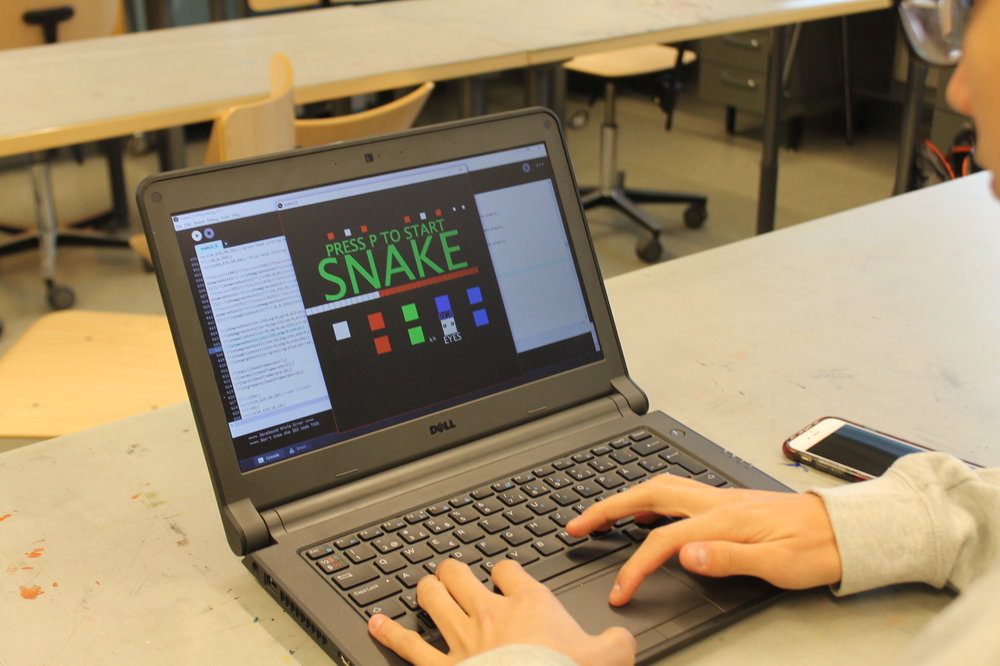The best part of maker culture is making something with your own hands!
Making something with your own hands gives people joy and satisfaction. Satisfaction is increased by being able to work independently – or with your team – to design, define and complete something that has the power of expression or something that helps to solve a problem that has significance and meaning to you.
– Heini Karppinen, CEO of Mehackit
Our CEO, Heini Karppinen, wrote about maker culture in school and youth work for Verke’s publication “Maker activities in youth work”. Most of this blog text is an excerpt of the original text in publication, and the link to the whole text can be found below.
People have always used their hands to make things, both because their circumstances have made it necessary and simply because it gives them pleasure. Even if you could obtain everything you need without actually making anything yourself, it might not increase your satisfaction in life.
Maker culture is perceived as DIY culture on the surface. What sets maker culture apart from the traditional culture of crafts is that the artistic and creative elements are often complemented by digital components. The global economy and the latest technologies are utilised in learning and networking as well as in production and distribution. Interest in maker culture has grown as technology has become more affordable and accessible. Equipment that is now within the reach of hobbyists can be used to carry out projects that were previously restricted to the realm of professionals.
The consumer trends behind maker culture
In recent years, trends such as doing things yourself, appreciating traditional manual skills, artisanal products, hyperlocality, voluntary simplicity and environmental awareness have risen in popularity in general and also among young people. The emergence of these trends is reflected in arenas such as social media aesthetics and blogs. The boundaries related to skills and competencies are being knocked down by combining creativity, art and engineering.
Whether we like it or not, technology and the media play a major role in our culture, and it’s not always easy to define them as separate phenomena. Increasingly affordable technology makes new things possible while the media constantly demands new types of content. The term “prosumer” (“producer” + “consumer”) coined by the futurist Alvin Toffler reflects the trend of the consumer playing a dual role by also being one of the producers of a service. The link between this trend and maker culture is obvious.
With today’s technology and media leading to a convergence of the roles of producer and consumer, the significance of large organisations is changing regardless of their resources. Open technology, open data, open science, open learning opportunities and open makerspaces are some of the many possibilities created by the sharing economy. This sea of opportunities can be navigated by anyone, and you don’t need a lot of money to do it.
The values of maker culture are a good fit with youth work and schools
Maker culture not only promotes creative activity, prototyping and innovation, but it also has social advantages. Maker culture aims to increase the use of open technologies and equal opportunities in learning, self-expression and building confidence. This means that maker culture is a potentially valuable proposition from the perspectives of education, school and youth work. How can we make it possible for all young people to have that initial first-hand experience of digital maker activities and problem solving?
In our experience, the best way to bring maker culture into the lives of young people is instructor-led but largely independent project work done in collaboration with others. An enthusiastic instructor makes learning more effective, which is why our primary focus is on the training of teachers and instructors. It has been particularly rewarding to follow the joint courses of teachers of different subjects, which allow each participant to take advantage of their special expertise. One of our courses combined music and visual arts teaching with the programming of images and sound.

Game made in Mehackit’s visual arts programming course
By its nature, technology-oriented project work is a shared learning experience for the instructor as well as the young participant. The goal is not to have the teacher know the solution to every problem that comes up. This can be a valuable new insight for the young person as well as the instructor. In working life, projects often involve creating something new, and the project manager’s job is not to know the answer to every question, but rather to enable good working conditions for the team members, motivate them to forge ahead and inspire them to learn new things together.”
Mehackit Atelier is a solution for any educator, who wants to include maker culture in their teaching – it offers tools and materials for creative technology education without the need to be a programming expert. You can get familiar with Atelier here!
Source: Verke, 2019. “Maker activities in youth work”, pages 21-27. Available in: https://www.verke.org/verke/publications/?lang=en